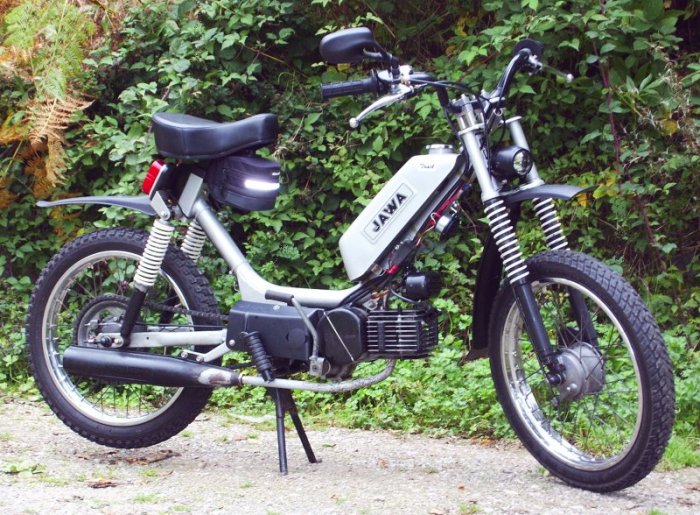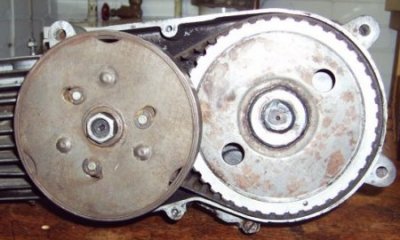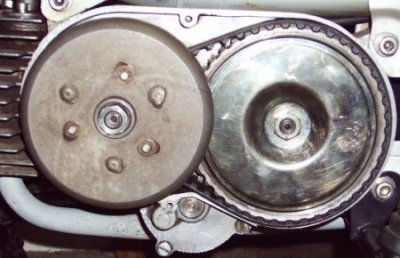|
Q: We have just bought a Jawa moped and are trying to figure out what year it is.
A: There should be a VIN plate on the steering head, behind the headlamp, this should give a year of manufacture. It might just say 196_ or 197_ or 198_ they sometimes didn't stamp the last number of the year, or sometimes even the last two. Otherwise just compare it to pictures on the site to find out which model it is and the notes on my “manuals” page will give an earliest and latest year of manufacture.
VIN structure:- A Babetta VIN as per ISO Standard will look something like this: TLJ 210 117 JK 123 456
* T for Europe,
* L for Czechoslovakia,
* J for Jawa,
* 210 for type 210 (might be 213,215,207),
* 117 is a series no,
* J stands for the year of build (this would be 1989),
* K is a factory code standing for Kolarovo (the town in which the factory was),
* rest is a running number.
Sometimes, especially in Europe you get only the end 6 digits. I think that for US-exports they always used the ISO 17 digit number. Thanks to MZ-B for this VIN information.
|


